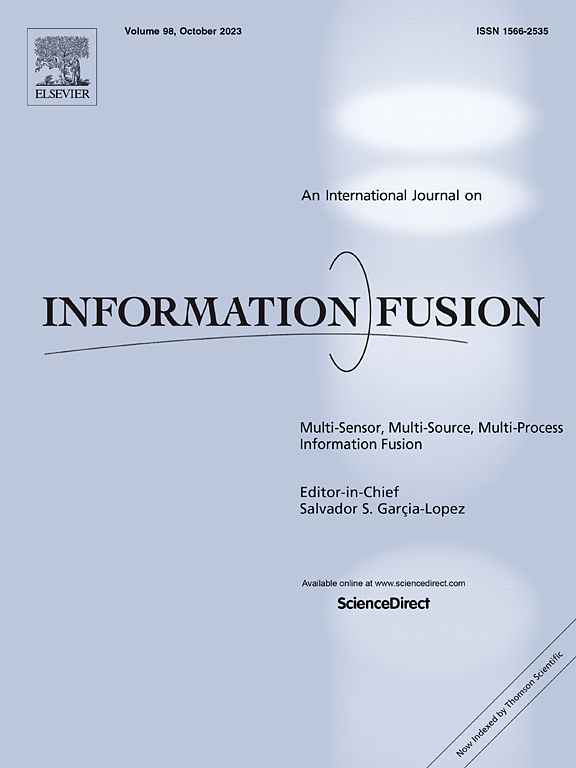ECGFM: A foundation model for ECG analysis trained on a multi-center million-ECG dataset
IF 14.7
1区 计算机科学
Q1 COMPUTER SCIENCE, ARTIFICIAL INTELLIGENCE
引用次数: 0
Abstract
The electrocardiogram (ECG) is widely used for diagnosing heart conditions due to its cost-effectiveness, non-invasiveness, and accessibility. Between 2014 and 2017, the First Affiliated Hospital of Zhengzhou University collected over a million clinical ECGs from diverse primary hospitals, each accompanied by initial diagnostic results. Effectively utilizing this vast dataset with potential label inconsistencies is a key challenge. In this study, we introduce ECGFM, a foundation model pre-trained on over a million clinical ECGs to achieve deep ECG comprehension. ECGFM comprises a convolutional encoder, a transformer decoder, and task-specific heads, pre-trained through three complementary sub-tasks: (i) contrastive predictive learning for unsupervised representation learning, (ii) normal/abnormal classification, and (iii) diagnostic text generation. Given potential label unreliability, active learning is integrated with the classification task to select key data for re-annotation, enhancing supervision quality. To enable ECGFM’s adaptability to downstream tasks with any-lead inputs, a transferred convolutional encoder is trained to align feature distributions. ECGFM’s effectiveness is evaluated using diverse public datasets, including PTB-XL, Georgia, CPSC, CinC 2020, MITDB, and the “Hefei High-tech Cup” dataset. Fine-tuning ECGFM (training only a task-specific head) delivers strong performance across datasets, nearing fully supervised methods. Additionally, in a one-month online test with 7951 recordings, ECGFM achieved a recall of 0.9335, a precision of 0.9571, and an F1-score of 0.9451, underscoring its robustness and potential for real-world applications.
ECGFM:在多中心百万心电数据集上训练的心电分析基础模型
心电图(ECG)由于其成本效益、无创性和可及性而被广泛用于心脏病的诊断。2014年至2017年,郑州大学第一附属医院从不同的基层医院收集了100多万张临床心电图,每张都附有初步诊断结果。有效地利用这个庞大的数据集与潜在的标签不一致是一个关键的挑战。在这项研究中,我们引入了ECGFM,这是一个对超过一百万临床心电图进行预训练的基础模型,以实现心电的深度理解。ECGFM包括一个卷积编码器,一个转换器解码器和特定任务的头部,通过三个互补的子任务进行预训练:(i)无监督表示学习的对比预测学习,(ii)正常/异常分类,以及(iii)诊断文本生成。考虑到潜在的标签不可靠性,主动学习与分类任务相结合,选择关键数据进行重新标注,提高监督质量。为了使ECGFM能够适应任何导联输入的下游任务,训练了一个转移卷积编码器来对齐特征分布。ECGFM的有效性使用不同的公共数据集进行评估,包括PTB-XL、Georgia、CPSC、CinC 2020、MITDB和“合肥高科技杯”数据集。微调ECGFM(只训练特定任务的头部)在数据集上提供了强大的性能,接近完全监督的方法。此外,在一个有7951条记录的为期一个月的在线测试中,ECGFM达到了0.9335的召回率、0.9571的精度和0.9451的f1分数,强调了它的鲁棒性和在实际应用中的潜力。
本文章由计算机程序翻译,如有差异,请以英文原文为准。
求助全文
约1分钟内获得全文
求助全文
来源期刊

Information Fusion
工程技术-计算机:理论方法
CiteScore
33.20
自引率
4.30%
发文量
161
审稿时长
7.9 months
期刊介绍:
Information Fusion serves as a central platform for showcasing advancements in multi-sensor, multi-source, multi-process information fusion, fostering collaboration among diverse disciplines driving its progress. It is the leading outlet for sharing research and development in this field, focusing on architectures, algorithms, and applications. Papers dealing with fundamental theoretical analyses as well as those demonstrating their application to real-world problems will be welcome.
 求助内容:
求助内容: 应助结果提醒方式:
应助结果提醒方式:


